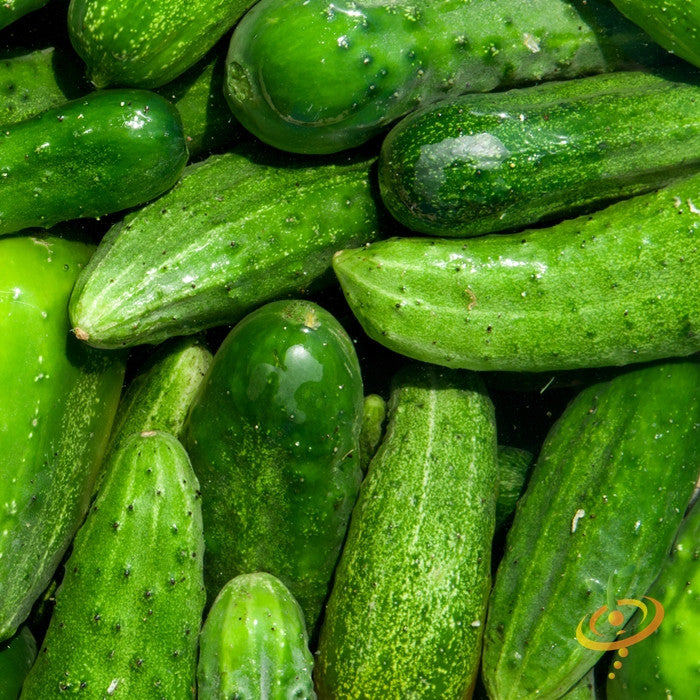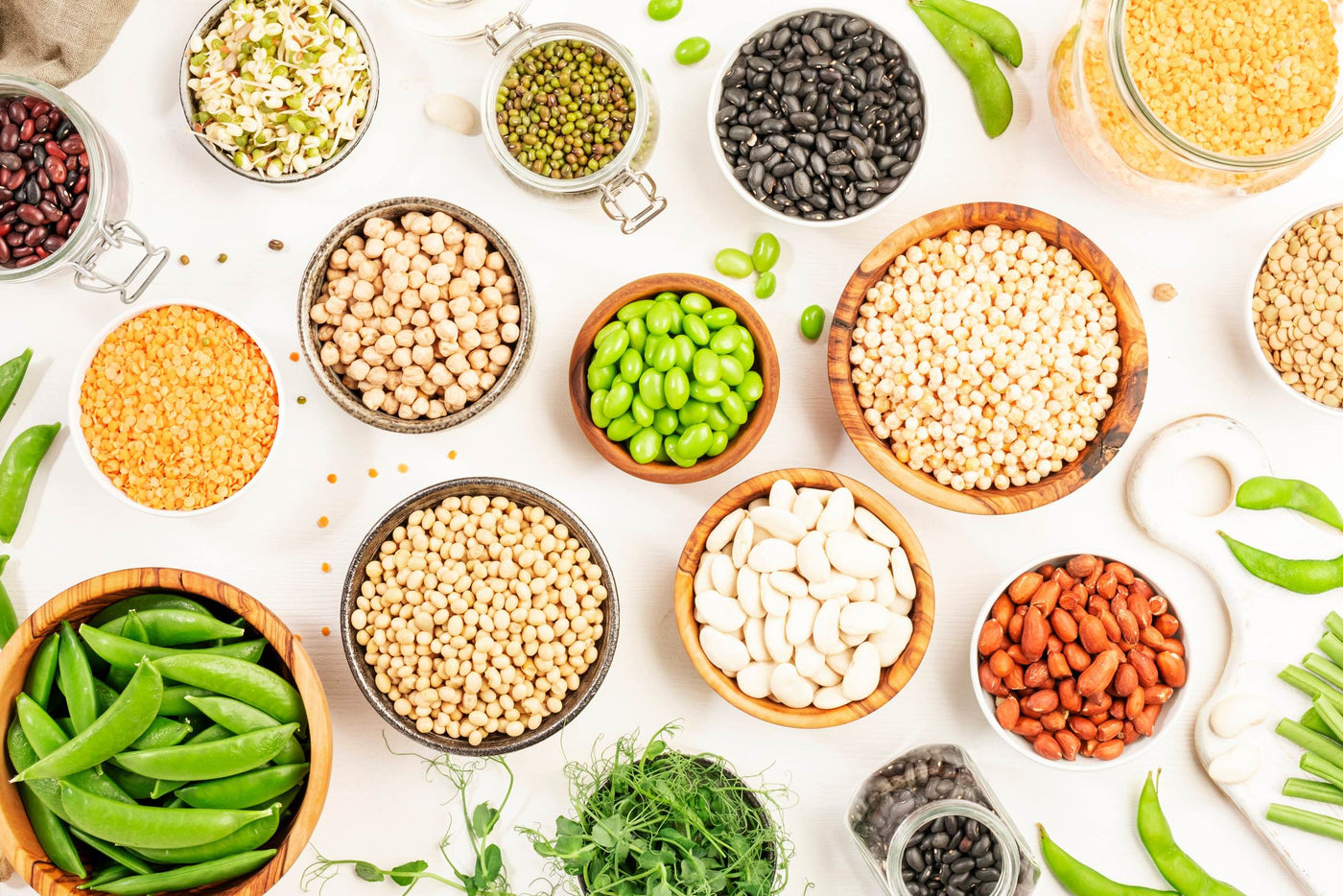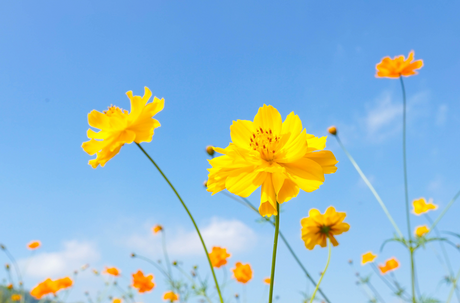- From $099 USDUnit price /Unavailable
Description

The Romano Pole Bean is a traditional Italian heirloom bean enjoyed by generations of gardeners. The vining plant produces high yields of flat, wide, stringless 6" pods that taste best when harvested young. Just a great all-around green bean.
- Easy to grow
- Stringless variety
- Harvest young for best flavor
- Vining plant requires staking
SEED PLANTING TIPS
- Botanical name: Phaseolus vulgaris
- Depth to plant seeds: 1" deep
- Spacing between plants: 5" apart
- Spacing between rows: 18"-24" apart
- Days to germinate (sprout): 8-14 days
- Germination soil temps: 70F-85F
- Soil needs: 6.0-7.0 pH
- Sun needs: Full sun
- Frost hardy: No
- Planting season: Spring, summer, fall
- # of plants per sq. ft.: Appx. 4 plants per sq. ft.
- Days to maturity: 65-80 days
Click here to view our full Bean grow guide
Good companion plants: Cucumber, Pea, Rosemary, Thyme, Tomato
Bean, Runner/Pole - White Emergo seeds
From $099 USDUnit price /UnavailableDescription
The White Emergo Runner Pole Bean twinkles with lots of sweet white flowers, which may be why it’s also known as Sweet White Runner Bean. Vigorous vines can grow to 10' to support long 8"-12" pods with creamy white beans inside. Pick young for snap beans and mature for shell beans, or let them dry for a bean similar to cannellini.
- Easy to grow
- Tasty white beans
- Long pods up to 8"-12”
- Eat fresh, shelled, or dried
SEED PLANTING TIPS
- Botanical name: Phaseolus coccineus
- Depth to plant seeds: 1" deep
- Spacing between plants: 5" apart
- Spacing between rows: 18"-24" apart
- Days to germinate (sprout): 8-14 days
- Germination soil temps: 70F-85F
- Soil needs: 6.0-7.0 pH
- Sun needs: Full sun
- Frost hardy: No
- Planting season: Spring, summer
- # of plants per sq. ft.: Appx. 4 plants per sq. ft.
- Days to maturity: 80-115 days
Click here to view our full Bean grow guide
Good companion plants: Cucumber, Pea, Rosemary, Thyme, Tomato
Squash (Summer) - Lebanese White Bush seeds
From $099 USDUnit price /UnavailableDescription
- The Lebanese Squash is a very popular heirloom squash variety that grows extremely quickly - only 45 days
- Very flavorful and widely grown in the Middle East
-
A summer squash variety from Lebenon
-
Grows as a compact bush size plant (not as a vine)
- Fast-growing summer squash produces large yields
- Perfect for growing in small spaces
-
Days to Maturity | 45 days
The Lebanese, White Squash is a favorite amongst many home gardeners. Most would recommend planting 2-4 bushes to feed a family throughout the season, while for smaller families or couples, 2 plants would be plenty. It really depends on how much squash you love to eat and whether or not you're growing other varieties at the same time. We do however recommend planting at least two plants for better pollination. The better the pollination, the better the fruit count! It's been reported that some gardeners have experienced up to 15 fruits per plant, however, that is on the high side. Most plants will produce 4-6 fruit, again depending on the pollination and other variables that come into play. There's just not an exact answer for this. You're almost at the mercy of mother nature on this, but most would agree it's a great producer! They're better picked when young and tender unless you're planning on stuffing them, then baking. In that case, they are let to grow larger, again, which will keep the plant from producing more fruit if you don't harvest regularly from them. So the bottom line is, if you want more fruit, harvest more regularly and when the squash is young and tender. This will send signals to the plant to bloom and flower again to keep reproducing. Generally, this plant will get 2-3 feet high, but regular fertilizing would, of course, alter these numbers as well. If your soil is in good condition with lots of healthy organic matter, you should have no problem getting plants that reach this size. May we suggest growing on black plastic for weed & insect control?
Additional Details
Though considered a vegetable in cooking, botanically speaking, squash is a fruit (being the receptacle for the plant's seeds). Squash can be served fresh (in salads) and cooked (squash stuffed with meat, fried squash, baked squash).
- The Lebanese Squash is a very popular heirloom squash variety that grows extremely quickly - only 45 days
Bean, Pole - Kentucky Wonder, White seeds
From $149 USDUnit price /UnavailableDescription

The Kentucky Wonder White-Seeded Pole Bean is one of the oldest and most widely enjoyed bean varieties ever grown. It produces reliably heavy yields of 6"-8" long green pods with white beans inside. If you prefer brown beans, we sell those too. These stringless beans grow high off the ground for easy harvesting.
- Easy to grow
- Prolific producer
- Long pods up to 8"
- Stringless variety
SEED PLANTING TIPS
- Botanical name: Phaseolus vulgaris
- Depth to plant seeds: 1" deep
- Spacing between plants: 4" apart
- Spacing between rows: 18"-24" apart
- Days to germinate (sprout): 5-10 days
- Germination soil temps: 70F-85F
- Soil needs: 6.0-7.0 pH
- Sun needs: Full sun
- Frost hardy: No
- Planting season: Spring, summer, fall
- # of plants per sq. ft.: Appx. 4 plants per sq. ft.
- Days to maturity: 55-60
Click here to view our full Bean grow guide
Good companion plants: Cucumber, Pea, Rosemary, Thyme, Tomato
- From $199 USDUnit price /Unavailable
Description
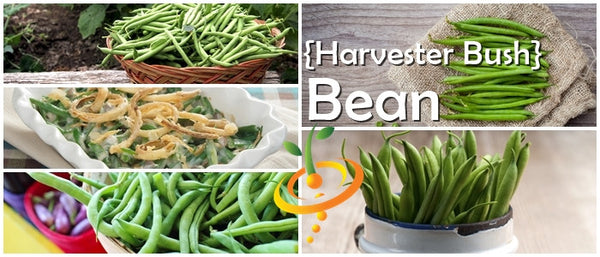
The Harvester Bush Bean grows high off the ground for easy picking. It has excellent flavor from pods that can grow up to 6" long. And you can be enjoying the juicy crunchiness in only 55 days. What’s not to like about this easy string bean?- Easy to grow
- High yielding
- Easy to harvest
- Long, flavorful pods
SEED PLANTING TIPS
- Botanical name: Phaseolus vulgaris
- Depth to plant seeds: 1" deep
- Spacing between plants: 4" apart
- Spacing between rows: 18"-24" apart
- Days to germinate (sprout): 5-10 days
- Germination soil temps: 70F-85F
- Soil needs: 6.0-7.0 pH
- Sun needs: Full sun
- Frost hardy: No
- Planting season: Spring, summer, fall
- # of plants per sq. ft.: Appx. 4 plants per sq. ft.
- Days to maturity: 50-55 days
Good companion plants: Cucumber, Pea, Rosemary, Thyme, Tomato
Bean, Bush - Tongue of Fire seeds
From $199 USDUnit price /UnavailableDescription
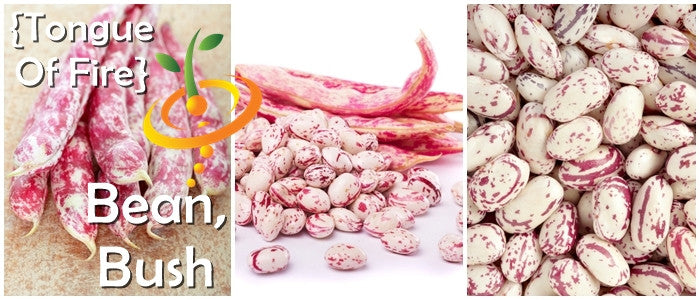
Not only does the Tongue of Fire Bush Bean have one of the best names for a vegetable, this Italian heirloom bean produces beautiful, flavorful wide cranberry streaked pods. Originally collected in Tierra del Fuego on the tip of South America, it produces 6"-7" long pods on a compact plant. Eat it young as a green bean, shell it when it matures, or let it dry and cook the large beans as you would kidney beans.
- Easy to grow
- High yielding
- Beautiful and delicious
- 6"-7" long pods
SEED PLANTING TIPS
- Botanical name: Phaseolus vulgaris
- Depth to plant seeds: 1" deep
- Spacing between plants: 4" apart
- Spacing between rows: 18"-24" apart
- Days to germinate (sprout): 5-10 days
- Germination soil temps: 70F-85F
- Soil needs: 6.0-7.0 pH
- Sun needs: Full sun
- Frost hardy: No
- Planting season: Spring, summer, fall
- # of plants per sq. ft.: Appx. 4 plants per sq. ft.
- Days to maturity: 55-90 days
Click here to view our full Bean grow guide
Good companion plants: Cucumber, Pea, Rosemary, Thyme, Tomato
- From $199 USDUnit price /Unavailable
Description
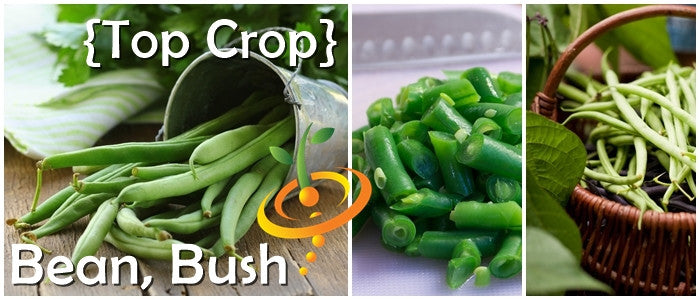
The Top Crop Bush Bean lives up to its name. This All-American Selections (AAS) winner produces high yields high up on a tall plant for easy harvesting. The 6"-7" pods are smooth, round, straight, and stringless, and they mature early in about 50 days. Also add heat tolerant to the list.
- Easy to grow
- Easy to harvest
- Heat tolerant
- Matures early—50 days
SEED PLANTING TIPS
- Botanical name: Phaseolus vulgaris
- Depth to plant seeds: 1" deep
- Spacing between plants: 4" apart
- Spacing between rows: 18"-24" apart
- Days to germinate (sprout): 5-10 days
- Germination soil temps: 70F-85F
- Soil needs: 6.0-7.0 pH
- Sun needs: Full sun
- Frost hardy: No
- Planting season: Spring, summer, fall
- # of plants per sq. ft.: Appx. 4 plants per sq. ft.
- Days to maturity: 50-55 days
Click here to view our full Bean grow guide
Good companion plants: Cucumber, Pea, Rosemary, Thyme, Tomato
-
View your rewards ✨
Earn & redeem BeetCOINS™ 💰 for seriously special rewards!
Bean, Pole - Asparagus Yard-Long seeds
From $199 USDUnit price /UnavailableDescription
The Red-Seeded Asparagus Yard-Long Pole Bean says it all—very long asparagus-green and -flavored pods with red beans inside, except it grows to only half its claim. Also called Snake Bean or Chinese Long Bean, but why use half the words, too? Thank goodness it’s stringless, or you’d spend all day stringing pods in the heat that it loves. Vigorous vines can grow to 12'. For best umami flavor, harvest when 8"-12" long and the width of a pencil.
- Easy to grow
- Stringless variety
- Heat loving
- Umami flavor
SEED PLANTING TIPS
- Botanical name: Phaseolus vulgaris
- Depth to plant seeds: 1" deep
- Spacing between plants: 5" apart
- Spacing between rows: 18"-24" apart
- Days to germinate (sprout): 8-14 days
- Germination soil temps: 70F-90F
- Soil needs: 6.0-7.0 pH
- Sun needs: Full sun
- Frost hardy: No
- Planting season: Spring, summer
- # of plants per sq. ft.: Appx. 4 plants per sq. ft.
- Days to maturity: 75-85 days
Click here to view our full Bean grow guide
Good companion plants: Cucumber, Pea, Rosemary, Thyme, Tomato
Bean, Runner/Pole - Prizewinner seeds
From $199 USDUnit price /UnavailableDescription

The Prizewinner Runner Pole Bean produces a blue-ribbon show of crimson blossoms that transform into succulent, flavorful foot-long pods with speckled purple-red beans inside. Pick young for snap beans and mature for shell beans, or give them more time on stage and use them dried. A prolific producer that will win first, second, and third prize in your garden.- Easy to grow
- High yields
- Long pods up to 12"
- Eat fresh, shelled, or dried
SEED PLANTING TIPS
- Botanical name: Phaseolus coccineus
- Depth to plant seeds: 1" deep
- Spacing between plants: 5" apart
- Spacing between rows: 18"-24" apart
- Days to germinate (sprout): 8-14 days
- Germination soil temps: 70F-85F
- Soil needs: 6.0-7.0 pH
- Sun needs: Full sun
- Frost hardy: No
- Planting season: Spring, summer
- # of plants per sq. ft.: Appx. 4 plants per sq. ft.
- Days to maturity: 80-115 days
Click here to view our full Bean grow guide.
Good companion plants: Cucumber, Pea, Rosemary, Thyme, Tomato
Shop more:
BUSH BEANS
FAVA & BROAD BEANS
LIMA BEANS
POLE BEANS
Pea (Snap) - Cascadia Sugar seeds
From $199 USDUnit price /UnavailableDescription

-
The Cascadia snap pea plant produces 4" long delicious snap peas
- Very flavorful
- Excellent for stir fry
- Plant Height: 32" tall
-
Days to Maturity | 65 days
Pea Seeds | Peas are a cool season vegetable, and do best in a climate where there are two months of cool growing weather, either spring planting in the northern regions or fall planting in the warmer, southern regions. Plant seeds 4"-6" apart.
Click here for complete Pea grow guide
Additional DetailsPeas are high in vitamin A, vitamin C, B vitamins and lutein. Dry weight is about one-quarter protein and one-quarter sugar.
Follow SeedsNow.com's board Peas on Pinterest. -
The Cascadia snap pea plant produces 4" long delicious snap peas
- From $199 USDUnit price /Unavailable
Description

- This is the most popular large-pod garden shelling pea
- Each plants produce 4"-5" pods with 6-9 large green peas inside
- It is an early producer. Does not require staking
- Easy to grow
- Great flavor and excellent quality
- Days to Maturity | 55 days
Additional DetailsPeas are high in vitamin A, vitamin C, B vitamins and lutein. Dry weight is about one-quarter protein and one-quarter sugar.
- This is the most popular large-pod garden shelling pea
Pepper (Sweet) - Orange King seeds
From $199 USDUnit price /UnavailableDescription

The Orange King Pepper has a sweet, mild nature, and rules with a lobed hand. Feast your eyes on the pageantry of fruit after fruit ripening from the regal green of a Caesar salad to the majestic orange of a Monarch butterfly. This 4"-6" thick-skinned, blocky baron is resplendent and refreshing in any salad bowl, pickle jar, or roasting pan.
- High yields
- Sweet and mild
- Crunchy and juicy
- Good fresh and cooked
SEED PLANTING TIPS
- Botanical name: Capsicum annuum
- Pepper size: Large/4"-6"
- Plant support: Tomato cage or stake
- Depth to plant seeds: .25" deep
- Spacing between plants: 18"-24" apart
- Spacing between rows: 24"-36" apart
- Days to germinate (sprout): 7-21 days
- Germination soil temps: 75F-85F
- Soil needs: 6.0-7.0 pH
- Sun needs: Full sun
- Frost hardy: No
- Planting season: Spring, summer
- # of plants per sq. ft.: Appx. 1 plant per 2 sq. ft.
- Days to maturity: 85-90 days
Good companion plants: Basil, Carrot, Cucumber, Eggplant, Okra, Rosemary, Sage, Squash, Tomato
- Plant produces good yields of orange colored sweet bell peppers. Peppers have thick walls turn from green to orange when mature. Suitable for home garden and market growers.
All Peppers ⟐ Sweet Peppers 📚 Sweet Peppers Grow Guide Pepper (Sweet) - Purple Beauty seeds
From $199 USDUnit price /UnavailableDescription

When Peter Piper picked a peck of pickled peppers, were they Purple Beauty Peppers? If “a peck” means “a bunch,” it’s possible. This compact plant produces pecks of 3" blocky beauties, with crispy texture and subtle, mild flavor. Fruit ripens from light green to deep plum while immature, to dark red with thick skin when fully ripe. Eat fresh, pickle a peck of them, or sauté with purple beans and watch the colors change as they get piping hot.
- Very high yields
- Mild, subtle flavor
- Harvest any color
- Good for containers
SEED PLANTING TIPS
- Botanical name: Capsicum annuum
- Pepper size: Medium/3" long by 3" wide
- Plant support: Tomato cage or stake
- Depth to plant seeds: .25" deep
- Spacing between plants: 12"-18" apart
- Spacing between rows: 18"-24" apart
- Days to germinate (sprout): 7-21 days
- Germination soil temps: 75F-85F
- Soil needs: 6.0-7.0 pH
- Sun needs: Full sun
- Frost hardy: No
- Planting season: Spring, summer
- # of plants per sq. ft.: Appx. 1 plant per sq. ft.
- Days to maturity: 70-75 days
Good companion plants: Basil, Carrot, Cucumber, Eggplant, Okra, Rosemary, Sage, Squash, Tomato
All Peppers ⟐ Sweet Peppers 📚 Sweet Peppers Grow Guide Sprouts/Microgreens - Rainbow Chard seeds
From $199 USDUnit price /UnavailableDescription
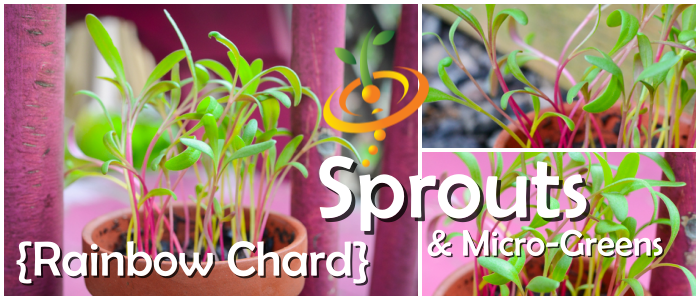
- Delicious
- Nutritious
- Beautiful colored sprouts ranging from red, pink, yellow, and orange
- Easy to grow
Sprouts/Microgreens - Lentils, Green seeds
From $199 USDUnit price /UnavailableDescription
Sprouts/Microgreens - Lentils, Red seeds
From $199 USDUnit price /UnavailableDescription
Bean, Pole - Purple Podded seeds
From $199 USDUnit price /UnavailableDescription
The Purple Podded Pole Bean produces a profuse plurality of purely purple pods. View this variety vegetate vigorous verdant vines with violet developments. Stringless shells surround savory seeds.
- Easy to grow
- High yielding
- Long pods up to 7"
- Easy to harvest
SEED PLANTING TIPS
- Botanical name: Phaseolus vulgaris
- Depth to plant seeds: 1" deep
- Spacing between plants: 5" apart
- Spacing between rows: 18"-24" apart
- Days to germinate (sprout): 8-14 days
- Germination soil temps: 70F-85F
- Soil needs: 6.0-7.0 pH
- Sun needs: Full sun
- Frost hardy: No
- Planting season: Spring, summer
- # of plants per sq. ft.: Appx. 4 plants per sq. ft.
- Days to maturity: 70-75 days
Click here to view our full Bean grow guide
Good companion plants: Cucumber, Pea, Rosemary, Thyme, Tomato
Bean, Bush - Edamame Soybean, Midori Giant (Soy Bean) seeds
From $199 USDUnit price /UnavailableDescription
If you enjoy going to Japanese restaurants or eating sushi, then you have probably eaten these beans cooked fresh or as tofu. The Midori Giant Edamame Soy Bean produces high yields of large 3" pods, with flavor best described as sweet, nutty, and buttery. You can cook the beans in their pods or shell them and use them fresh in any recipe.
- Easy to grow
- Large, high-yielding pods and beans
- Sweet flavor
- Grown just like green beans
SEED PLANTING TIPS
- Botanical name: Glycine max
- Depth to plant seeds: 1" deep
- Spacing between plants: 3"-4" apart
- Spacing between rows: 18"-24" apart
- Days to germinate (sprout): 5-10 days
- Germination soil temps: 65F-90F
- Soil needs: 5.5-7.5 pH
- Sun needs: Full sun
- Frost hardy: No
- Planting season: Spring, summer, fall
- # of plants per sq. ft.: Appx. 4-6 plants per sq. ft.
- Days to maturity: 80-95 days
Good companion plants: Cucumber, Pea, Rosemary, Thyme, Tomato
Sprouts/Microgreens - Flax (brown) seeds
From $199 USDUnit price /UnavailableDescription

Sure to be your new favorite!Very easy to grow.
Ready to consume after just a couple of days.
Pepper (Sweet) - Yolo Wonder seeds
From $249 USD$299Unit price /UnavailableDescription

The Yolo Wonder Pepper (Capsicum annuum) is related to the California "Cal" Wonder Bell Pepper, but left the Golden State for the hot, dry climate of New Mexico. Like everyone in the family, Yolo is blocky with thick skin, a little bigger and fleshier than Cal at 4"-5", and just as sweet and mild. This beautiful plant produces loads of glossy fruits. Try growing them this year, because you only live once. YOLO!- Heat resistant
- Very high yields
- Juicy and sweet
- Harvest any color
- Recommended by USU
SEED PLANTING TIPS
- Botanical name: Capsicum annuum
- Pepper size: Large/4"-5"
- Plant support: Tomato cage or stake
- Depth to plant seeds: .25" deep
- Spacing between plants: 18"-24" apart
- Spacing between rows: 24"-36" apart
- Days to germinate (sprout): 7-21 days
- Germination soil temps: 75F-85F
- Soil needs: 6.0-7.0 pH
- Sun needs: Full sun
- Frost hardy: No
- Planting season: Spring, summer
- # of plants per sq. ft.: Appx. 1 plant per 2 sq. ft.
- Days to maturity: 70-80 days
Good companion plants: Basil, Carrot, Cucumber, Eggplant, Okra, Rosemary, Sage, Squash, Tomato
All Peppers ⟐ Sweet Peppers 📚 Sweet Peppers Grow Guide Arugula - Roquette (Rocket) seeds
From $299 USDUnit price /UnavailableDescription

Roquette Arugula (also called Rocket) is one of the easiest leafy greens you can grow, and can be harvested as early as 20 days after planting. The young seed pods, flowers, leaves, and mature seeds are all edible. A member of the mustard family, the leaves of the Arugula plant add a deliciously tangy/peppery flavor to any meal.
- Easy to grow
- Entire plant is edible
- Frost tolerant
- Quick to mature — 20 days for baby greens!
Shop all Arugula Seeds Shop Good Companion Plants for Arugula 📚 Grow Guide: Arugula Bean, Pole - Kentucky Wonder, Brown seeds
From $299 USDUnit price /UnavailableDescription

The Kentucky Wonder Brown-Seeded Pole Bean is a reliable and heavy yielder. This vigorous vining plant produces bright green, stringless 8" pods with flavorful brown beans inside. Wondering if you can get flavorful white beans inside? Yes, you can. Quick to start producing, and will continue to set blooms and beans until frost.
- Easy to grow
- Long 8" pods
- Quick to produce
- Long growing season
SEED PLANTING TIPS
- Botanical name: Phaseolus vulgaris
- Depth to plant seeds: 1" deep
- Spacing between plants: 5" apart
- Spacing between rows: 18"-24" apart
- Days to germinate (sprout): 8-14 days
- Germination soil temps: 70F-90F
- Soil needs: 6.0-7.0 pH
- Sun needs: Full sun
- Frost hardy: No
- Planting season: Spring, summer
- # of plants per sq. ft.: Appx. 4 plants per sq. ft.
- Days to maturity: 75-85 days
Click here to view our full Bean grow guide
Good companion plants: Cucumber, Pea, Rosemary, Thyme, Tomato
Cauliflower - All Year Round seeds
From $299 USDUnit price /UnavailableDescription

- This Cauliflower variety produces large white heads and surrounded by dark green leaves
- Continues to grow well for a long time
- Suitable for successional sowing all year round
-
Days to Maturity | 65 days
- Cauliflower is an annual cool-season crop, half-hardy to frost and light freezes. Plant in rows 2 1/2 to 3 feet apart, with 2 feet between plants.
Click here for complete Cauliflower grow guide
Cilantro/Coriander, Slow-Bolt (splits) seeds
From $299 USDUnit price /UnavailableDescription

Cilantro is the most popular leafy aromatic herb with a tangy citrusy-parsley-like flavor, used in Latin and Asian cuisines.
Coriander is the dried seed, whole or powdered, with an earthy, floral flavor used as a spice in Indian cuisine. Grow it just for the seeds or the tiny pinkish flowers, which are quite sweet.
Cilantro prefers cool weather, and this slow-bolt variety will tolerate a bit more heat, putting out more leaves for a longer time before it starts bolting out tasty flowers and Coriander seeds.
Leaves, stems, flowers, seeds, and root of this fast-growing herb are all edible. It also likes shady spots, so a good one to grow indoors.
- Citrusy-parsley-like flavor
- All parts are edible
- Grows 1'-2' tall
- Good for indoor gardens
As a companion plant, it attracts pollinators and beneficial insects, and repels aphids, carrot rust fly, grasshoppers, mosquitoes, potato beetles, and spider mites.As a medicinal herb, Coriander has been used internally to treat anxiety, arthritis, bad breath, colic, constipation, diabetes, diarrhea, flatulence, indigestion, inflammation, insomnia, lack of appetite, nausea, nervousness, pain, stomach cramps, and urinary tract infections (UTIs), and externally to treat rheumatism, headache, joint pain, and tired eyes.
⚠️ Medicinal properties are presented as information only, and are not a recommendation or prescription for use. Consult a medical professional before using any herb medicinally.
Good companion plants: Anise, Asparagus, Basil, Broccoli, Brussels Sprouts, Cabbage, Carrot, Celery, Chervil, Collards, Cumin, Dill, Kale, Kohlrabi, Lemongrass, Lettuce, Mint, Mustard, Oregano, Parsley, Parsnip, Pea, Potato, Rutabaga, Spinach, Squash, Tomato, Turnip, Zucchini
More facts about Cilantro/Coriander:
- This slow-bolting strain is grown primarily for its broad, deep green, celery-like, pungent foliage.
- Used in Oriental and Mexican cuisine.
- Use seed to flavor meats, pickles and baked goods.
- Coriander contains antioxidants. It has also been used as a folk medicine for the relief of anxiety and insomnia. Coriander has also been documented as a traditional treatment for diabetes.
See Cilantro/Coriander Recipes & Growing Tips on our Pinterest Board
Follow SeedsNow.com's board Cilantro on Pinterest. Cucumber - Armenian, Long Green (Metki Serpent Melon) seeds
From $299 USDUnit price /UnavailableDescription
- These Armenian cucumber seeds will produce delicious 30" - 36" long dark green cucumbers
- Bitter-free with excellent flavor
-
Excellent slicer and ideal for salads and many culinary dishes
- Easy to grow
-
Days to Maturity | 65 days
-
Cucumber Seeds | Grow cucumbers where a long, warm growing season, minimum 65 days, can be assured. Plant seeds where there is ample space and vines can sprawl, the simplest way is to plant cucumbers in hills.
Click here for complete Cucumber grow guide
- These Armenian cucumber seeds will produce delicious 30" - 36" long dark green cucumbers
-
Get free seeds
🪴✨ FREE gift with every order!
- From $299 USDUnit price /Unavailable
Description

The Ashley cucumber is a popular variety among gardeners, particularly those interested in cultivating high-quality vegetables. This cucumber type is known for its exceptional flavor, crisp texture, and versatility in culinary applications. The Ashley cucumber is classified as a slicing cucumber, making it ideal for fresh consumption in salads, sandwiches, or as a refreshing snack.
One of the defining characteristics of the Ashley cucumber is its growth habit. It is a vigorous, high-yielding plant that can produce an abundance of fruit throughout the growing season. Typically, the Ashley cucumber reaches maturity approximately 55 to 60 days after planting, allowing for a relatively quick turnaround from seed to harvest. This rapid growth cycle is particularly advantageous for gardeners looking to maximize their vegetable output within a limited timeframe.
In terms of physical attributes, the Ashley cucumber is characterized by its dark green skin, which is smooth and free from spines. The fruit typically grows to a length of about 8 to 10 inches, making it a suitable size for slicing. The flesh of the Ashley cucumber is firm and has a mild, sweet flavor profile, which is often preferred by consumers over other cucumber varieties.
From a nutritional standpoint, cucumbers, including the Ashley variety, are low in calories and high in water content, making them an excellent choice for hydration. They also provide essential vitamins and minerals, such as vitamin K, vitamin C, and potassium. Incorporating Ashley cucumbers into a balanced diet can contribute to overall health and wellness.
When cultivating Ashley cucumbers, it is important to consider their growing conditions. This variety thrives in well-drained, fertile soil with a pH level between 6.0 and 6.8. Adequate sunlight is crucial, as Ashley cucumbers require at least 6 to 8 hours of direct sunlight per day for optimal growth. Regular watering is also essential, particularly during dry spells, to ensure consistent moisture levels in the soil.
In terms of pest and disease management, the Ashley cucumber is relatively resilient; however, gardeners should remain vigilant for common cucumber pests such as aphids and cucumber beetles. Implementing integrated pest management strategies, including crop rotation and the use of beneficial insects, can help mitigate potential infestations.
In conclusion, the Ashley cucumber variety is an excellent choice for both novice and experienced gardeners. Its rapid growth, high yield, and superior taste make it a valuable addition to any vegetable garden. By providing the appropriate growing conditions and care, gardeners can enjoy a bountiful harvest of Ashley cucumbers, contributing to a diverse and nutritious diet.
Click here for complete Cucumber grow guide
Follow SeedsNow.com's board Cucumbers on Pinterest Cucumber - Boston Pickling seeds
From $299 USDUnit price /UnavailableDescription

- This popular picking variety produces smooth, bright-green, 3" fruits with black spines
- Extremely strong plant
- Grows continually if kept picked
- Excellent cucumber variety for any garden
-
Days to Maturity | 50-55 days
-
Cucumber Seeds | Grow cucumbers where a long, warm growing season, minimum 65 days, can be assured. Plant seeds where there is ample space and vines can sprawl, the simplest way is to plant cucumbers in hills.
Click here for complete Cucumber grow guide
- This popular picking variety produces smooth, bright-green, 3" fruits with black spines
Cucumber - Chinese Snake seeds
From $299 USDUnit price /UnavailableDescription

- The Chinese Snake (Curved) cucumber produces fruits that are smooth, dark-green with white spines
- The fruits grow to about 15" to 18" long and curved
- Grows on strong & vigorous vines
-
Days to Maturity | 75 days
-
Cucumber Seeds | Grow cucumbers where a long, warm growing season, minimum 65 days, can be assured. Plant seeds where there is ample space and vines can sprawl, the simplest way is to plant cucumbers in hills.
Click here for complete Cucumber grow guide
- The Chinese Snake (Curved) cucumber produces fruits that are smooth, dark-green with white spines
- From $299 USDUnit price /Unavailable
Description

-
The Ever-bearing cucumber is one of the most popular cucumbers you can grow.
- As its name implies, this cucumber variety continues to grow as its fruits are picked
- Crisp fruit with excellent flavor and crunch
- Vigorous vines loaded with fresh cucumbers all season
- Great for table use, slicing, pickling and/or processing
-
Days to Maturity | 60 days
-
Cucumber Seeds | Grow cucumbers where a long, warm growing season, minimum 65 days, can be assured. Plant seeds where there is ample space and vines can sprawl, the simplest way is to plant cucumbers in hills.
Click here for complete Cucumber grow guide
Follow SeedsNow.com's board Cucumbers on Pinterest. -
The Ever-bearing cucumber is one of the most popular cucumbers you can grow.
Cucumber - Homemade Pickles seeds
From $299 USDUnit price /UnavailableDescription

- The Homemade Pickles variety is one of the best cucumber varieties you can grow to make your own home-grown pickles
- Extremely strong plant - resistant to common cucumber diseases
- Produces a large amount of delicious small to medium sized cucumbers on a compact vine
- Produces a lot over a long season
- Ideal for container gardening and for anyone with limited growing space!
-
Days to Maturity | 55 days
-
Cucumber Seeds | Grow cucumbers where a long, warm growing season, minimum 65 days, can be assured. Plant seeds where there is ample space and vines can sprawl, the simplest way is to plant cucumbers in hills.
Click here for complete Cucumber grow guide
Follow SeedsNow.com's board Cucumbers on Pinterest. - The Homemade Pickles variety is one of the best cucumber varieties you can grow to make your own home-grown pickles
- From $299 USDUnit price /Unavailable
Description

- The Lemon Cucumber is a very popular and rare Heirloom variety that resembles a bright yellow lemon
- Produces 3-4"-inch oval/round cucumbers
- They taste so good you'll be looking forward to eating them straight from the garden
- A popular cucumber variety for anyone who likes cucumbers
-
Days to Maturity | 75 days
-
Cucumber Seeds | Grow cucumbers where a long, warm growing season, minimum 65 days, can be assured. Plant seeds where there is ample space and vines can sprawl, the simplest way is to plant cucumbers in hills.
Click here for complete Cucumber grow guide
Follow SeedsNow.com's board Cucumbers on Pinterest. - The Lemon Cucumber is a very popular and rare Heirloom variety that resembles a bright yellow lemon
- From $299 USDUnit price /Unavailable
Description

- The Marketer cucumber is a popular All-America Selections (AAS) Winner!
- Produces extremely flavorful 9" long (or longer) dark green cucumbers
- Excellent for slicing and salads
- Perfect for any sized home garden (and market growers) -
Days to Maturity | 55 days
-
Cucumber Seeds | Grow cucumbers where a long, warm growing season, minimum 65 days, can be assured. Plant seeds where there is ample space and vines can sprawl, the simplest way is to plant cucumbers in hills.
Click here for complete Cucumber grow guide
Follow SeedsNow.com's board Cucumbers on Pinterest. - The Marketer cucumber is a popular All-America Selections (AAS) Winner!
- From $299 USDUnit price /Unavailable
Description

-
Marketmore cucumbers are a very popular and productive cucumber variety.
- Fruits grow 8"-9" long and 2" across.
- Smooth and dark green skin.
- This is one of our best selling cucumber varieties.
- Easy to grow.
- Excellent flavor.
-
Days to Maturity | 55 days
-
Cucumber Seeds | Grow cucumbers where a long, warm growing season, minimum 65 days, can be assured. Plant seeds where there is ample space and vines can sprawl, the simplest way is to plant cucumbers in hills.
Click here for complete Cucumber grow guide
Follow SeedsNow.com's board Cucumbers on Pinterest. -
Marketmore cucumbers are a very popular and productive cucumber variety.
- From $299 USDUnit price /Unavailable
Description

-
The Muncher cucumber is a delicious variety perfect for munching right out of the garden!
- Excellent flavor and taste
- Medium sized fruits
- Easy to grow
-
Days to Maturity | 60 days
-
Cucumber Seeds | Grow cucumbers where a long, warm growing season, minimum 65 days, can be assured. Plant seeds where there is ample space and vines can sprawl, the simplest way is to plant cucumbers in hills.
Click here for complete Cucumber grow guide
-
The Muncher cucumber is a delicious variety perfect for munching right out of the garden!
Cucumber - National Pickling seeds
From $299 USDUnit price /UnavailableDescription

- The National Pickling cucumber is an extremely prolific, old-fashioned cucumber variety
- Extremely popular cucumber variety
- Produces 6" long, medium green, with black spines
- Perfect sliced or even for pickling (great for making dill pickles)
- One of the most popular varieties for the home grower
-
Days to Maturity | 55 days
-
Cucumber Seeds | Grow cucumbers where a long, warm growing season, minimum 65 days, can be assured. Plant seeds where there is ample space and vines can sprawl, the simplest way is to plant cucumbers in hills.
Click here for complete Cucumber grow guide
- The National Pickling cucumber is an extremely prolific, old-fashioned cucumber variety
- From $299 USDUnit price /Unavailable
Description

- The Space Master Cucumber is an ideal choice for gardeners seeking high yields in limited space. This compact variety thrives in garden beds and containers, producing crisp, flavorful cucumbers with minimal vine spread. Its disease resistance and rapid growth make it suitable for both novice and experienced growers aiming for efficient, productive harvests. Perfect for fresh salads or pickling, the Space Master cucumber combines superior quality with space-saving benefits.
- It's the perfect cucumber variety for gardeners that want to grow cucumbers in limited space.
- Plant has short vines
- Extremely compact cucumber plant
- produces excellent yields of delicious green cucumbers -
Day to Maturity | 60 days
- Cucumber Seeds | Grow cucumbers where a long, warm growing season, minimum 65 days, can be assured. Plant seeds where there is ample space and vines can sprawl, the simplest way is to plant cucumbers in hills.
Click here for complete Cucumber grow guideFollow SeedsNow.com's board Cucumbers on Pinterest. - The Space Master Cucumber is an ideal choice for gardeners seeking high yields in limited space. This compact variety thrives in garden beds and containers, producing crisp, flavorful cucumbers with minimal vine spread. Its disease resistance and rapid growth make it suitable for both novice and experienced growers aiming for efficient, productive harvests. Perfect for fresh salads or pickling, the Space Master cucumber combines superior quality with space-saving benefits.
- From $299 USDUnit price /Unavailable
Description

- The Straight Eight cucumber variety is a popular heirloom type of cucumber ideal for slicing and/or for eating fresh right off the vine
- They're great when eaten fresh or used in salads
- Pick them off the vine as soon as they are 8" long
- Easy to grow and excellent flavor
-
Days to Maturity | 60 days
-
Cucumber Seeds | Grow cucumbers where a long, warm growing season, minimum 65 days, can be assured. Plant seeds where there is ample space and vines can sprawl, the simplest way is to plant cucumbers in hills.
Click here for complete Cucumber grow guide
- The Straight Eight cucumber variety is a popular heirloom type of cucumber ideal for slicing and/or for eating fresh right off the vine
Cucumber - Tendergreen Burpless seeds
From $299 USDUnit price /UnavailableDescription

- The Tendergreen Burpless cucumber variety is extremely sweet and tender
- Produces medium sized green fruits
- Pick when they grow to 8"
- Also used for pickling if picked less than 8"
-
Days to Maturity | 65 days
-
Cucumber Seeds | Grow cucumbers where a long, warm growing season, minimum 65 days, can be assured. Plant seeds where there is ample space and vines can sprawl, the simplest way is to plant cucumbers in hills.
Click here for complete Cucumber grow guide
- The Tendergreen Burpless cucumber variety is extremely sweet and tender
- From $299 USDUnit price /Unavailable
Description

- Rare white heirloom cucumber variety
- Produces beautiful white cucumbers about 6" long x 2" thick
- Heat tolerant
- Excellent variety for any sized backyard garden, raised beds, or containers
- Amazing flavor and very tender
-
Days to Maturity | 55-60 days
-
Cucumber Seeds | Grow cucumbers where a long, warm growing season, minimum 65 days, can be assured. Plant seeds where there is ample space and vines can sprawl, the simplest way is to plant cucumbers in hills.
Click here for complete Cucumber grow guide
Follow SeedsNow.com's board Cucumbers on Pinterest. - Rare white heirloom cucumber variety
Eggplant - Long Green Louisiana seeds
From $299 USDUnit price /UnavailableDescription

- Solanum melongena. Produces excellent yields of 9" long/glossy light green eggplants
- White flesh
- Very delicious with nutty flavor and no bitterness
- Excellent for Creole fish stew and other culinary creations -
Days to Maturity | 65 days
-
Eggplant Seeds | Start seed indoors to allow at least 10 weeks for young plants to develop. Plant in rows 3 feet apart, with 2 feet between plants.
Click here for complete Eggplant grow guide
- Solanum melongena. Produces excellent yields of 9" long/glossy light green eggplants
Eggplant - Long Ping Tung seeds
From $299 USDUnit price /UnavailableDescription

- Very early producer of 11" long and thin fruits. Perfect for stir fries!
- One of the only eggplants that are not bitter and does not require any peeling
- The fruits start out bright lavender and change to darker purple when mature
- Vigorous and stress resistant plant
- Produces well in the north and all across the US
-
Days to Maturity | 55-60 days
-
Eggplant Seeds | Start seed indoors to allow at least 10 weeks for young plants to develop. Plant in rows 3 feet apart, with 2 feet between plants.
Click here for complete Eggplant grow guide
- Very early producer of 11" long and thin fruits. Perfect for stir fries!
Eggplant - Pandora Striped seeds
From $299 USDUnit price /UnavailableDescription

- These seeds produce heavy yields of rose colored white stripe teardrop shaped eggplants
- Pandora Striped eggplants are extremely tender and delicious
- Perfect for home gardens and market growers
- Great addition to any gourmet meal
-
Days to Maturity | 75-80 days
-
Eggplant Seeds | Start seed indoors to allow at least 10 weeks for young plants to develop. Plant in rows 3 feet apart, with 2 feet between plants.
Click here for complete Eggplant grow guide
- These seeds produce heavy yields of rose colored white stripe teardrop shaped eggplants
Endive - Broadleaf, Classic seeds
From $299 USDUnit price /UnavailableDescription
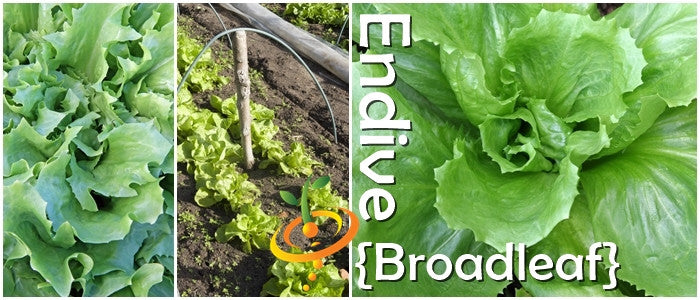
- Endive is a leafy vegetable belonging to the daisy family
- Endive can be cooked or used raw in salads
- Rich in many vitamins and minerals, especially in folate and vitamins A and K, and is high in fiber
- Days to Maturity | 50-60 days
- Endive is a leafy vegetable belonging to the daisy family
Endive - Broadleaf, Full Heart Batavian seeds
From $299 USDUnit price /UnavailableDescription

-
This plant produces excellent yields of dark green curly leaves with large tender crisp ribs
- An excellent choice for salads greens
- Endive is rich in many vitamins and minerals, especially in folate and vitamins A and K, and is high in fiber
- Days to Maturity | 80-90 days
-
This plant produces excellent yields of dark green curly leaves with large tender crisp ribs
Endive - Green Curled Ruffec seeds
From $299 USDUnit price /UnavailableDescription

- Endive is a healthy and delicious leafy green. The Green Curled Endive plant produces dark green curly leaves with large tender crisp ribs
- Excellent salads and sandwiches
- Also boiled or steamed
- Extremely easy to grow
- Endive is rich in many vitamins and minerals, especially in folate and vitamins A and K, and is high in fiber
- Days to Maturity | 90 days
- Endive is a healthy and delicious leafy green. The Green Curled Endive plant produces dark green curly leaves with large tender crisp ribs
- From $299 USDUnit price /Unavailable
Description

- The leaves of the Horehound plant are widely used to flavor juices and teas. Horehound is used to make hard lozenge candies that are considered by folk medicine to aid digestion, soothe sore throats, and relieve inflammation.
- Easy to grow from seed and can be sowed directly in the garden
- Plant in a sunny location with well-drainage
-
Days to Maturity | 75 days
See Horehound Recipes & Growing Tips on our Pinterest Board
Follow SeedsNow.com's board Horehound on Pinterest. - The leaves of the Horehound plant are widely used to flavor juices and teas. Horehound is used to make hard lozenge candies that are considered by folk medicine to aid digestion, soothe sore throats, and relieve inflammation.
Kohlrabi - Delicatesse, White seeds
From $299 USDUnit price /UnavailableDescription
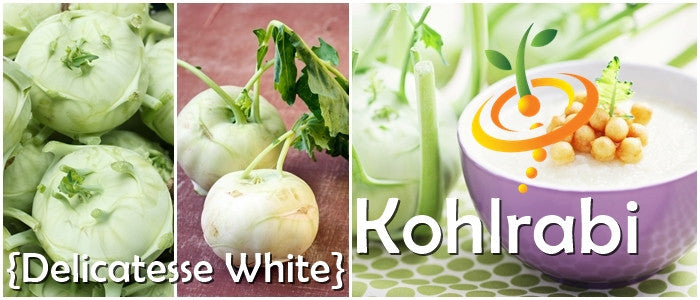
- This Kohlrabi variety produces extremely tender round bulbs
- Kohlrabi looks like a turnip growing above-ground
- Best to harvest when bulbs reach 4" across
- Well known for uniform size and disease resistance
-
Days to Maturity | 55-60 days
-
Kohlrabi Seeds | Grow Kohlrabi in loose, average soil. Direct-sow your seeds 4 to 6 weeks before the last frost in your growing zone; about ¼ inch deep, and 10 seeds per foot.
Click here for complete Kohlrabi grow guide
Additional Detail
Kohlrabi is one of the most commonly eaten vegetables in Kashmir Locally called monj, the vegetable is eaten along with the leaves (haakh). A Kashmiri household may have this on their dinner or lunch plates three to four times a week.
- This Kohlrabi variety produces extremely tender round bulbs
Kohlrabi - Vienna, White seeds
From $299 USDUnit price /UnavailableDescription

- Bulb is pale green with tender, white, crisp flesh
- Kohlrabi looks like a turnip growing above-ground
- Eat when bulbs are 2 inches in diameter
-
Days to Maturity | 65 days
-
Kohlrabi Seeds | Grow Kohlrabi in loose, average soil. Direct-sow your seeds 4 to 6 weeks before the last frost in your growing zone; about ¼ inch deep, and 10 seeds per foot.
Click here for complete Kohlrabi grow guide
Additional Details
Kohlrabi is one of the most commonly eaten vegetables in Kashmir Locally called monj, the vegetable is eaten along with the leaves (haakh). A Kashmiri household may have this on their dinner or lunch plates three to four times a week.
- Bulb is pale green with tender, white, crisp flesh
- From $299 USDUnit price /Unavailable
Description

- Compact, 18 to 20 inch plant requires staking and should utilize a trellis
- Fine, sweet flavor when picked young
- Pods are 3 inches with 5 or 6 peas
- Easy to grow
- Days to Maturity | 60 days
- Peas are a cool season vegetable, and do best in a climate where there are two months of cool growing weather, either spring planting in the northern regions or fall planting in the warmer, southern regions. Plant seeds 4"-6" apart.
Click here for complete Pea grow guide
Additional DetailsPeas are high in vitamin A, vitamin C, B vitamins and lutein. Dry weight is about one-quarter protein and one-quarter sugar.
Pea (Snow) - Oregon Giant seeds
From $299 USDUnit price /UnavailableDescription

- This variety has unusually large, thick pods that grow up to 5" long
- Medium green, flat pods are very tender and have a mild, sweet flavor that holds well into the season
- Vines grow 30-36 inches tall and are heavy producers making this variety one of the best producing snow peas available
- Shows resistance to common wilt, mosaic virus, and powdery mildew
-
Days to Maturity | 70 days
Peas are a cool season vegetable, and do best in a climate where there are two months of cool growing weather, either spring planting in the northern regions or fall planting in the warmer, southern regions. Plant seeds 4"-6" apart.
Click here for complete Pea grow guide
Additional Details
Peas are high in vitamin A, vitamin C, B vitamins and lutein. Dry weight is about one-quarter protein and one-quarter sugar.
- This variety has unusually large, thick pods that grow up to 5" long
🌱 Featured Seed Types (A - Z)
View allcontinue shopping









































































